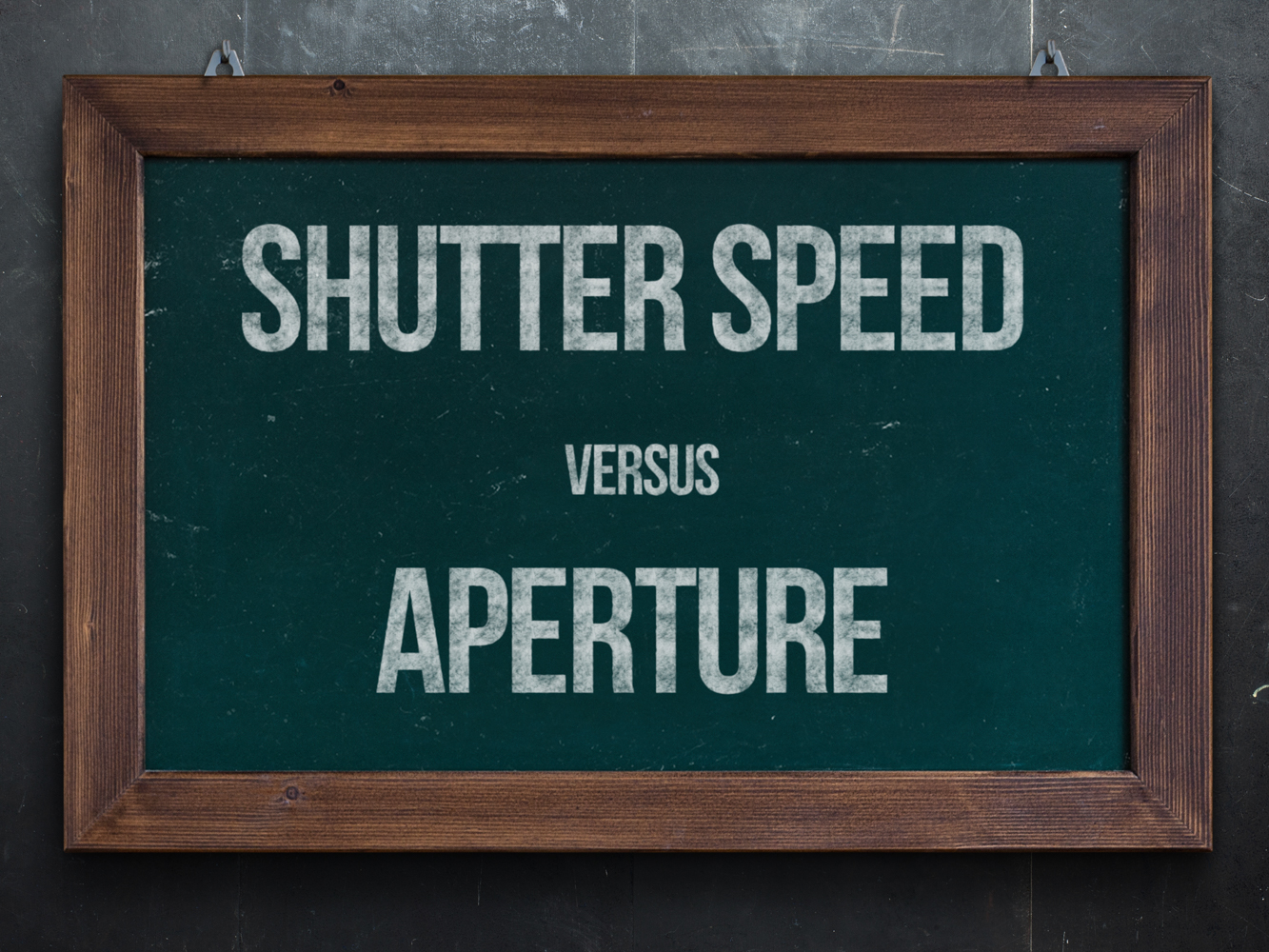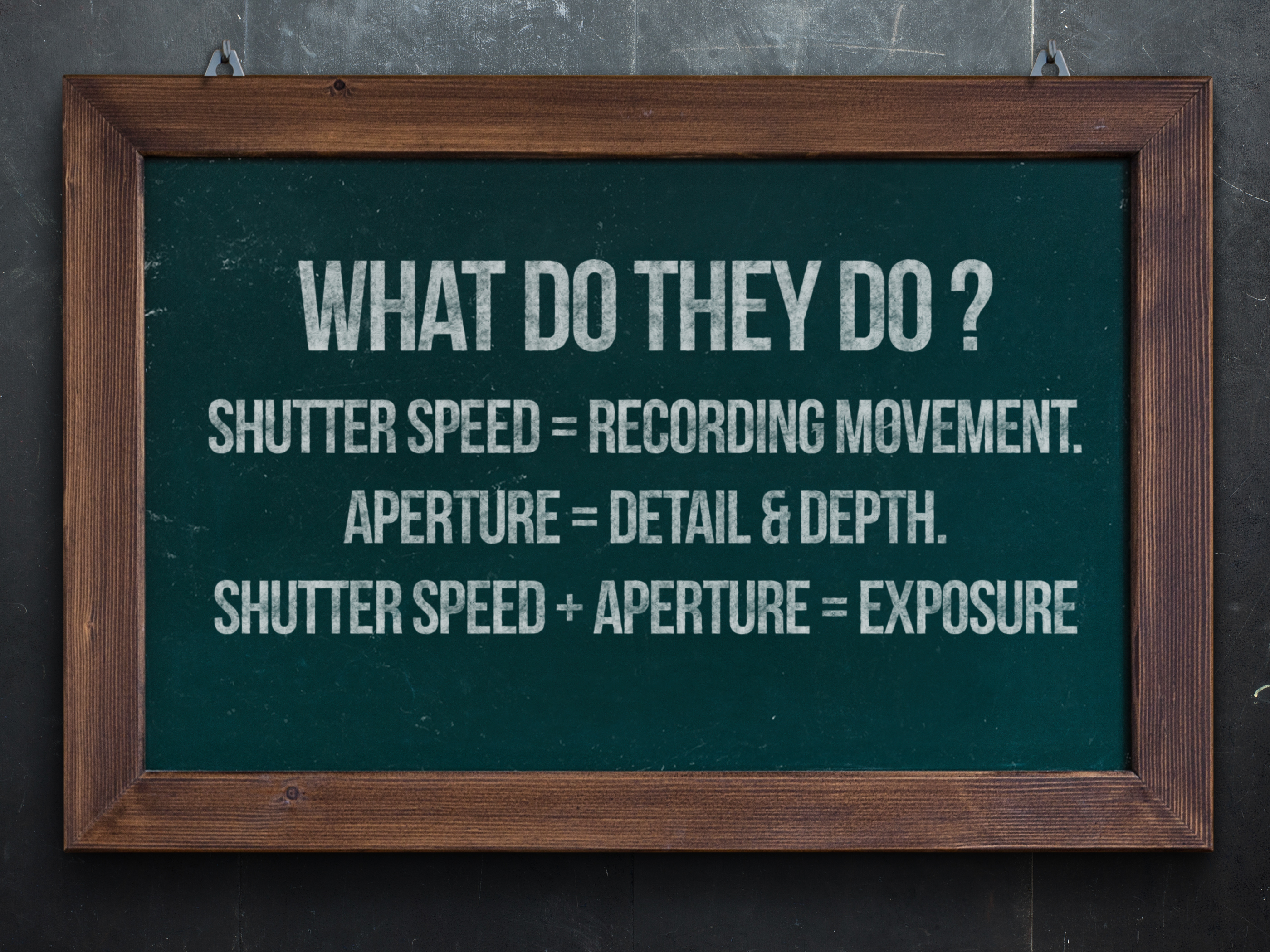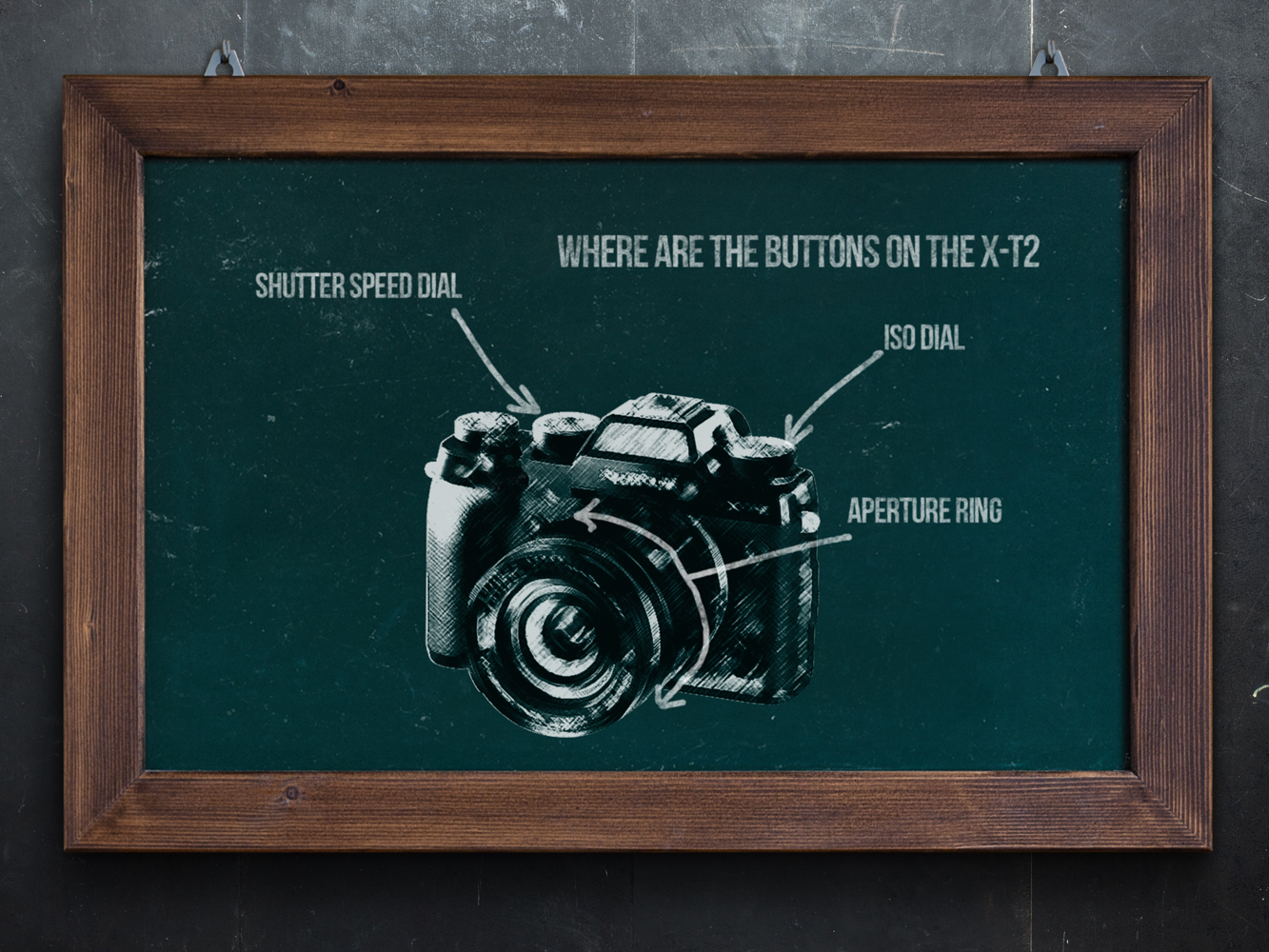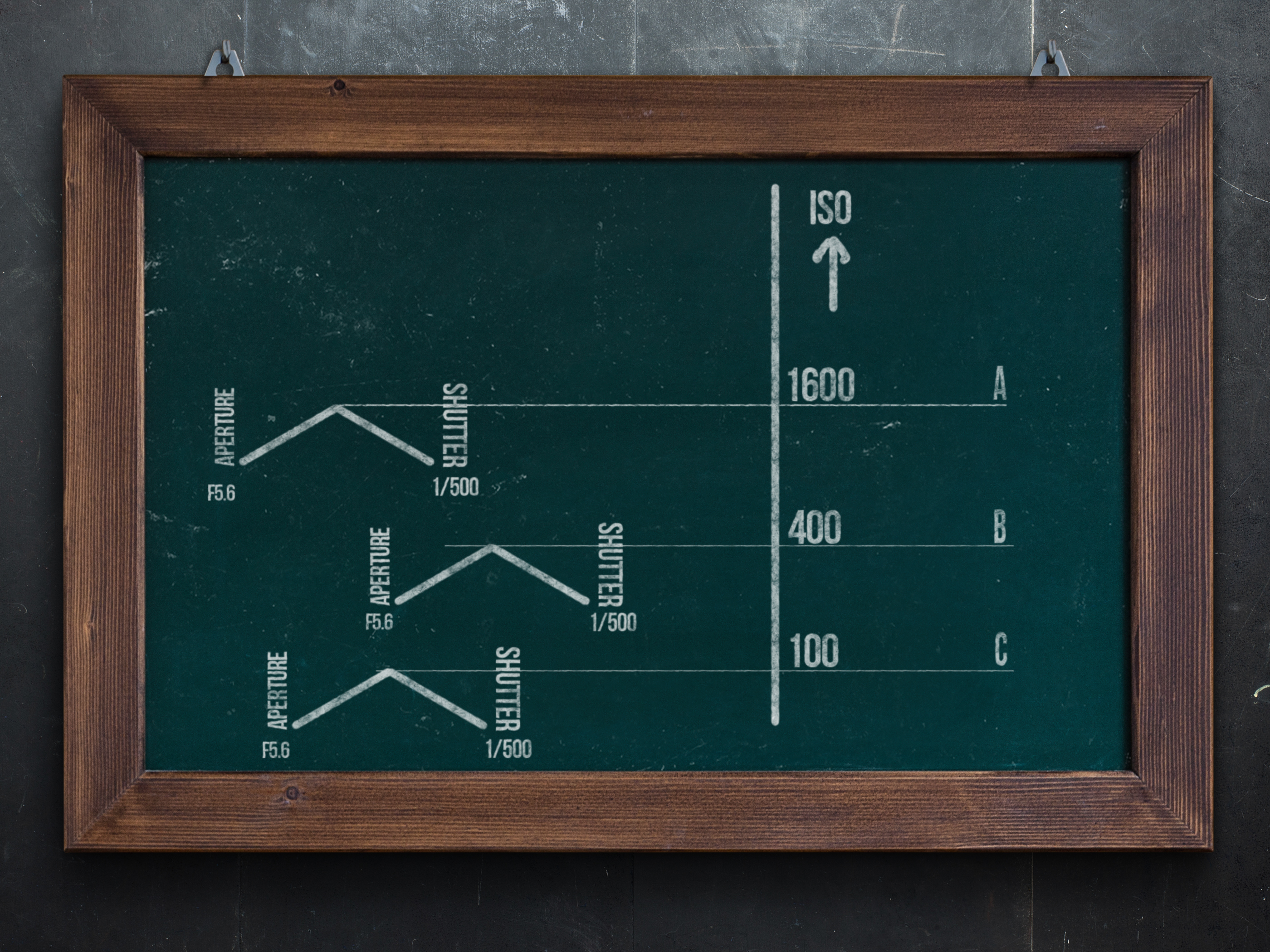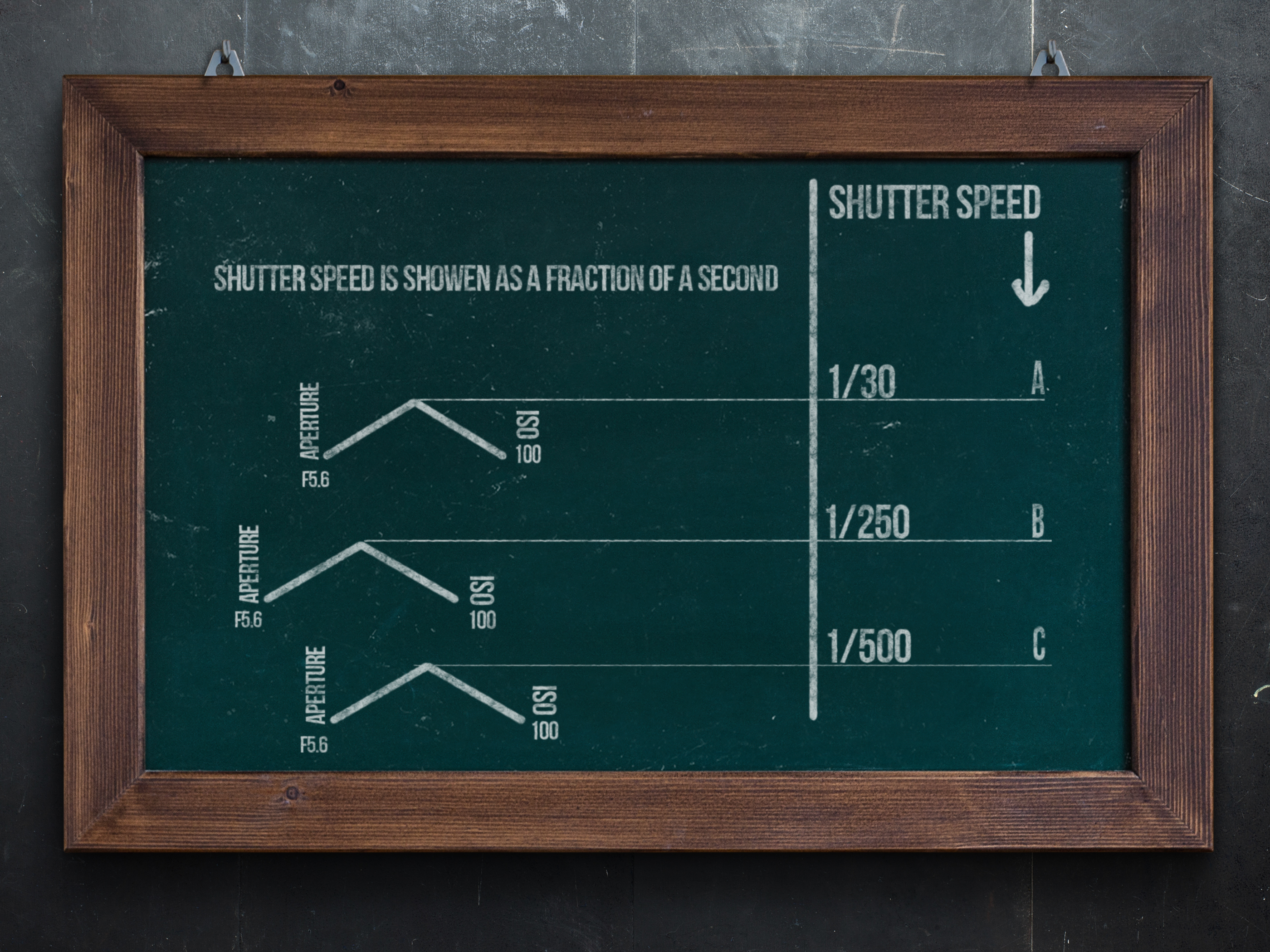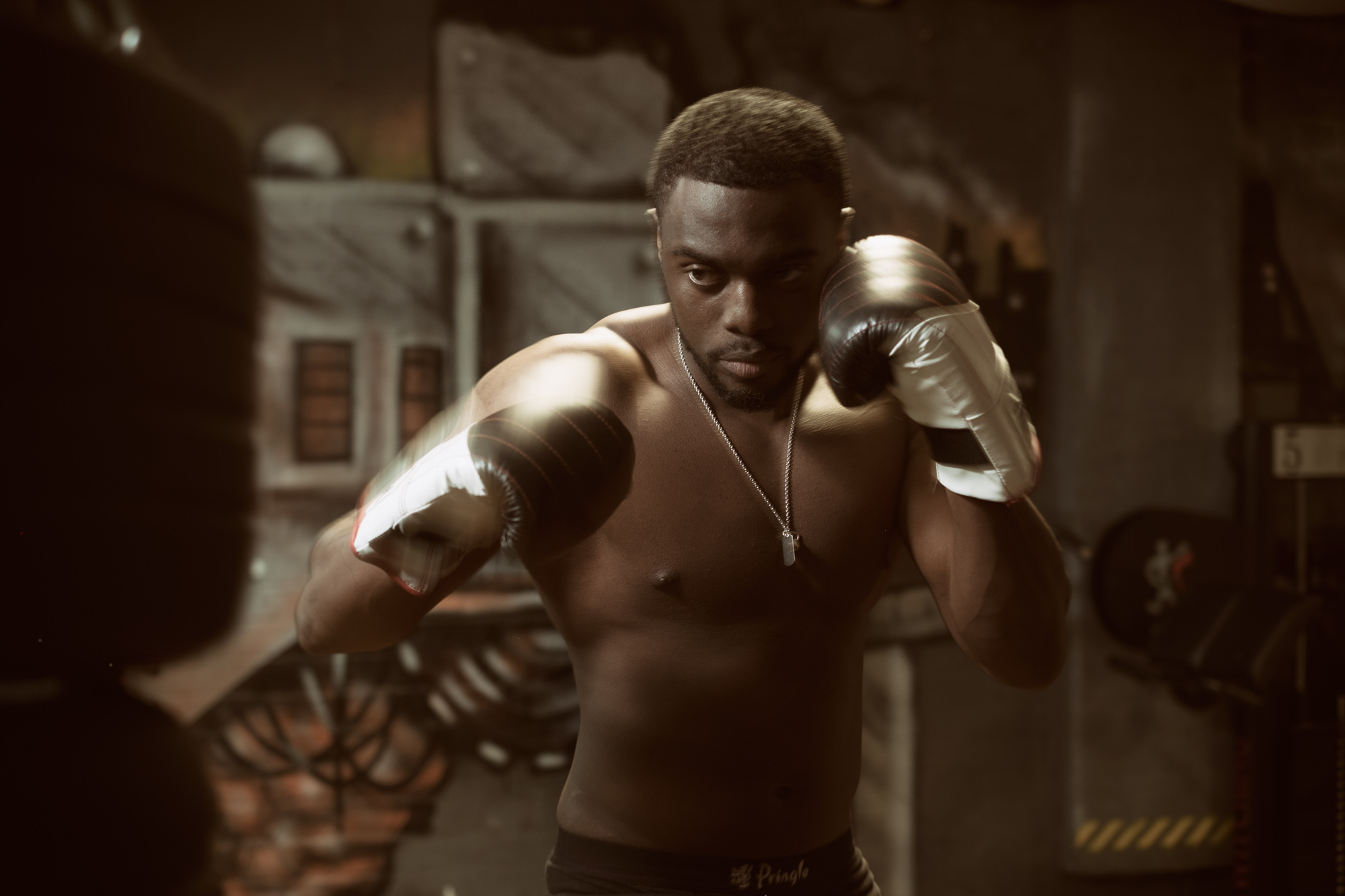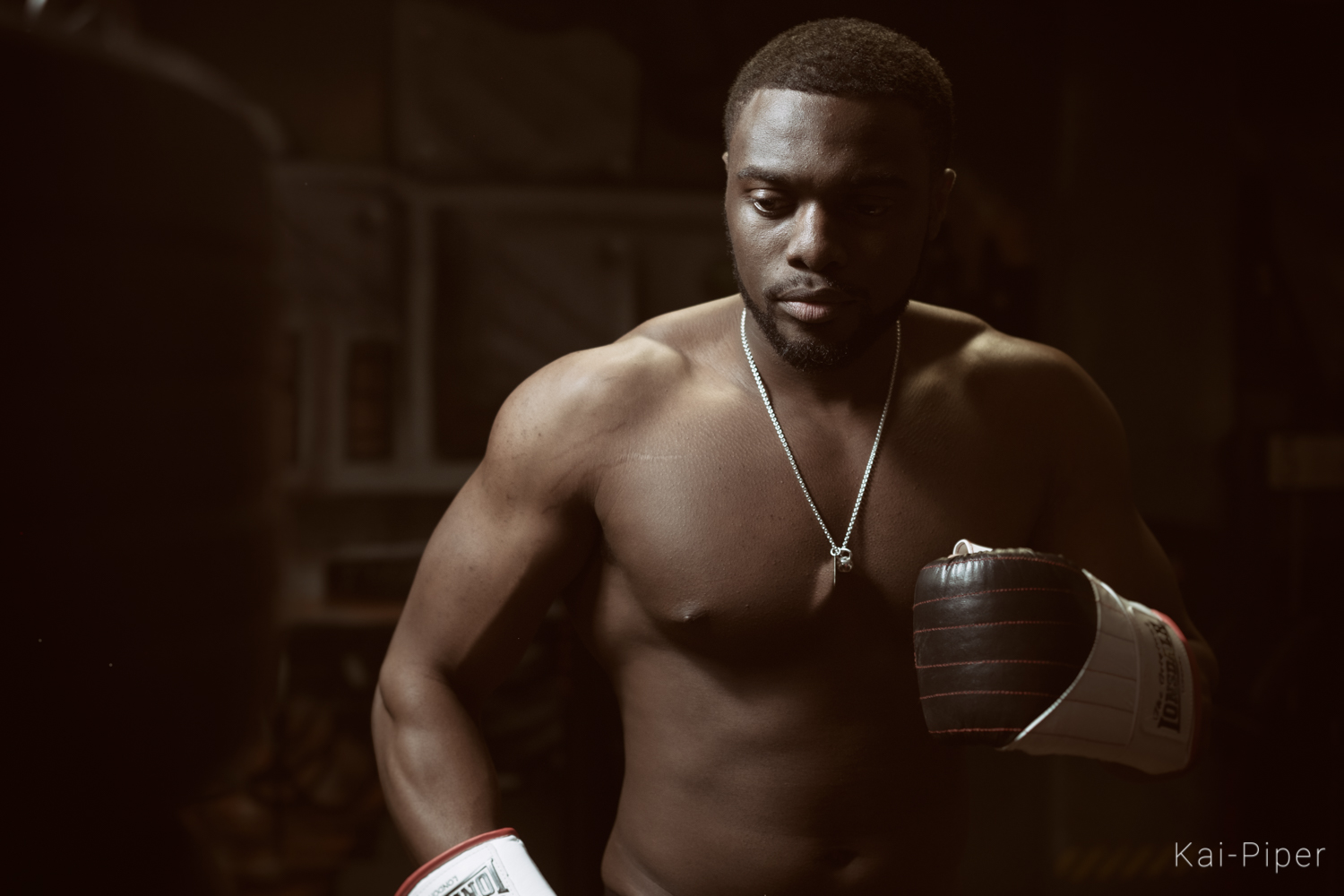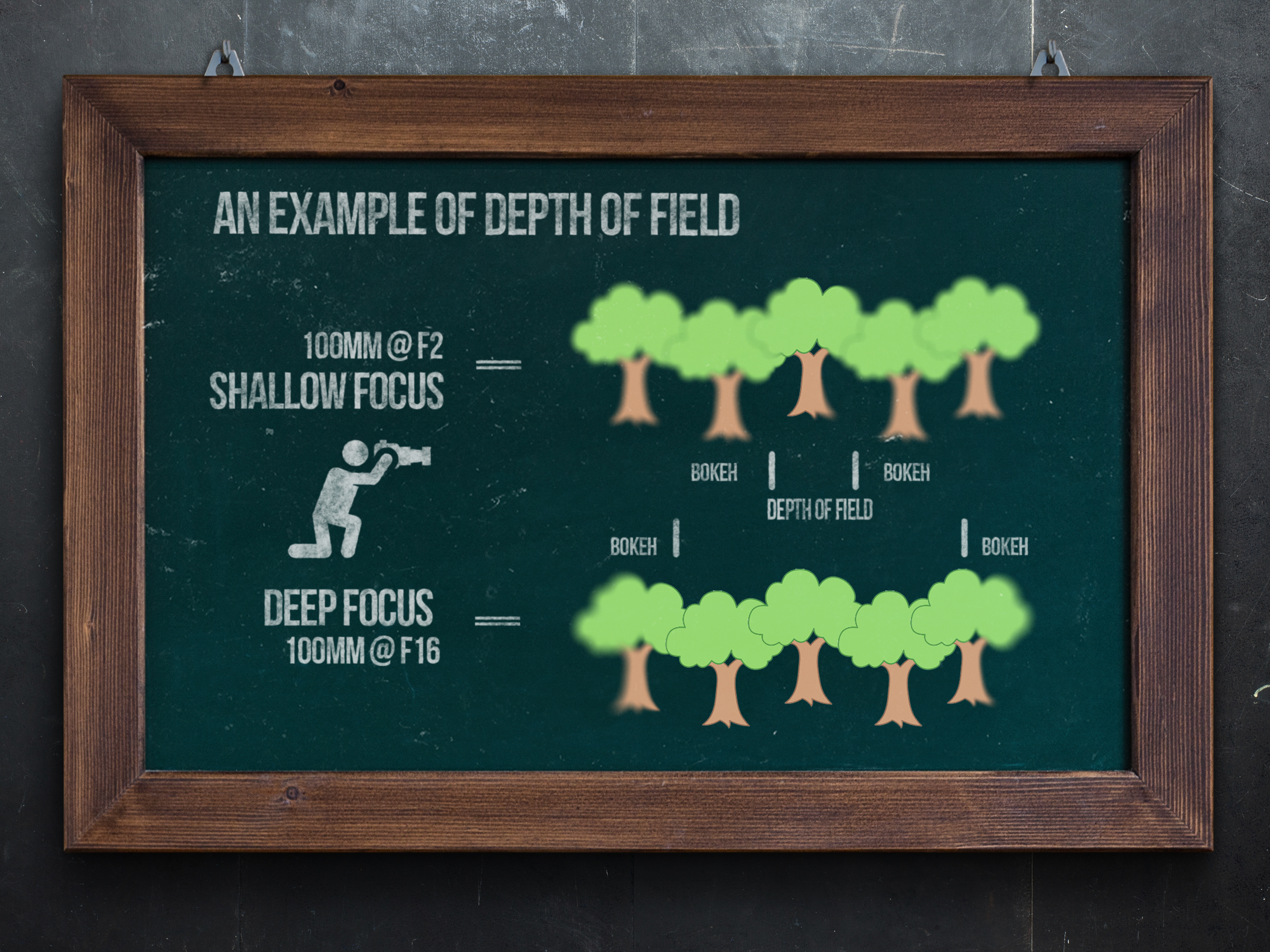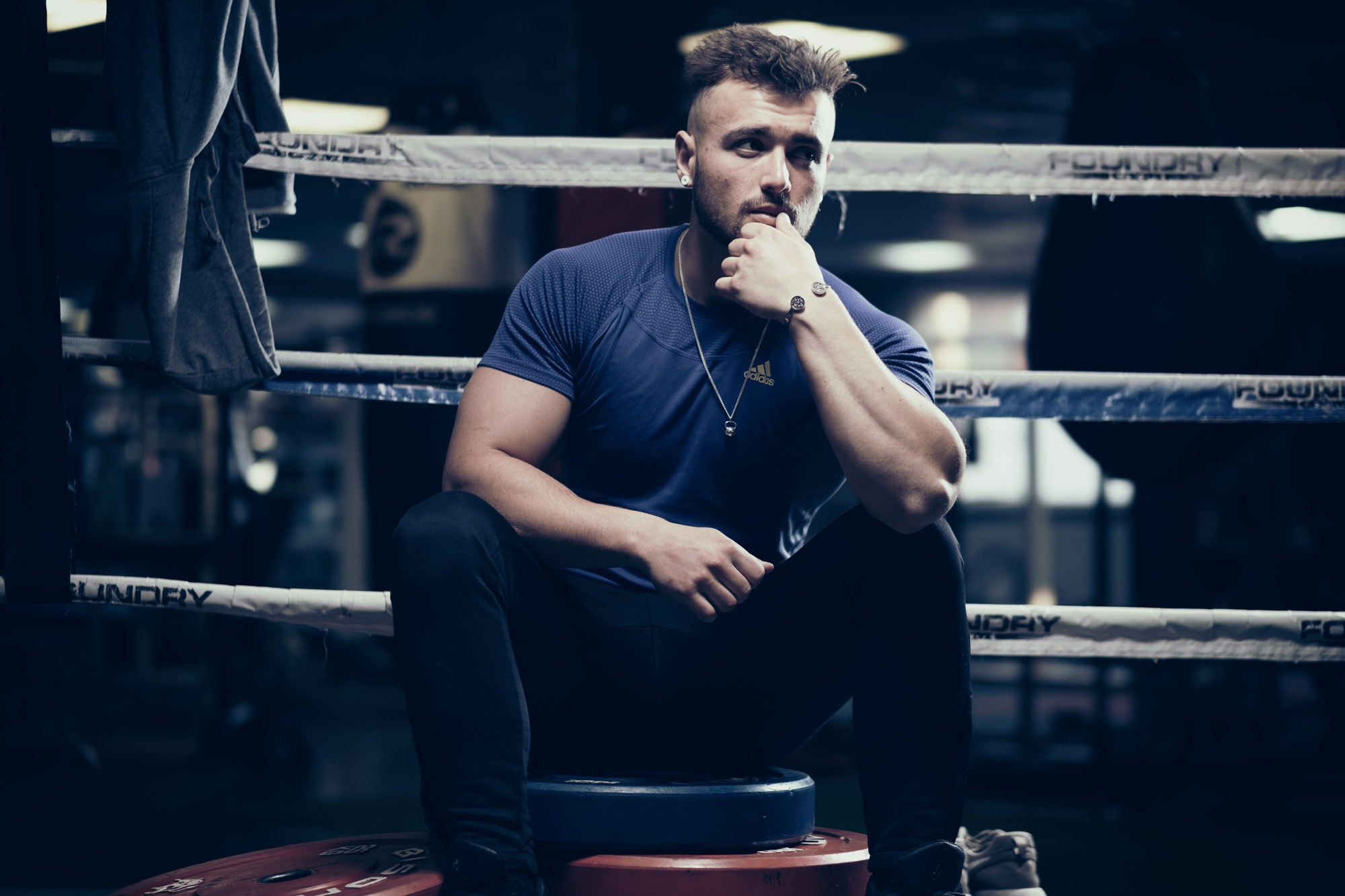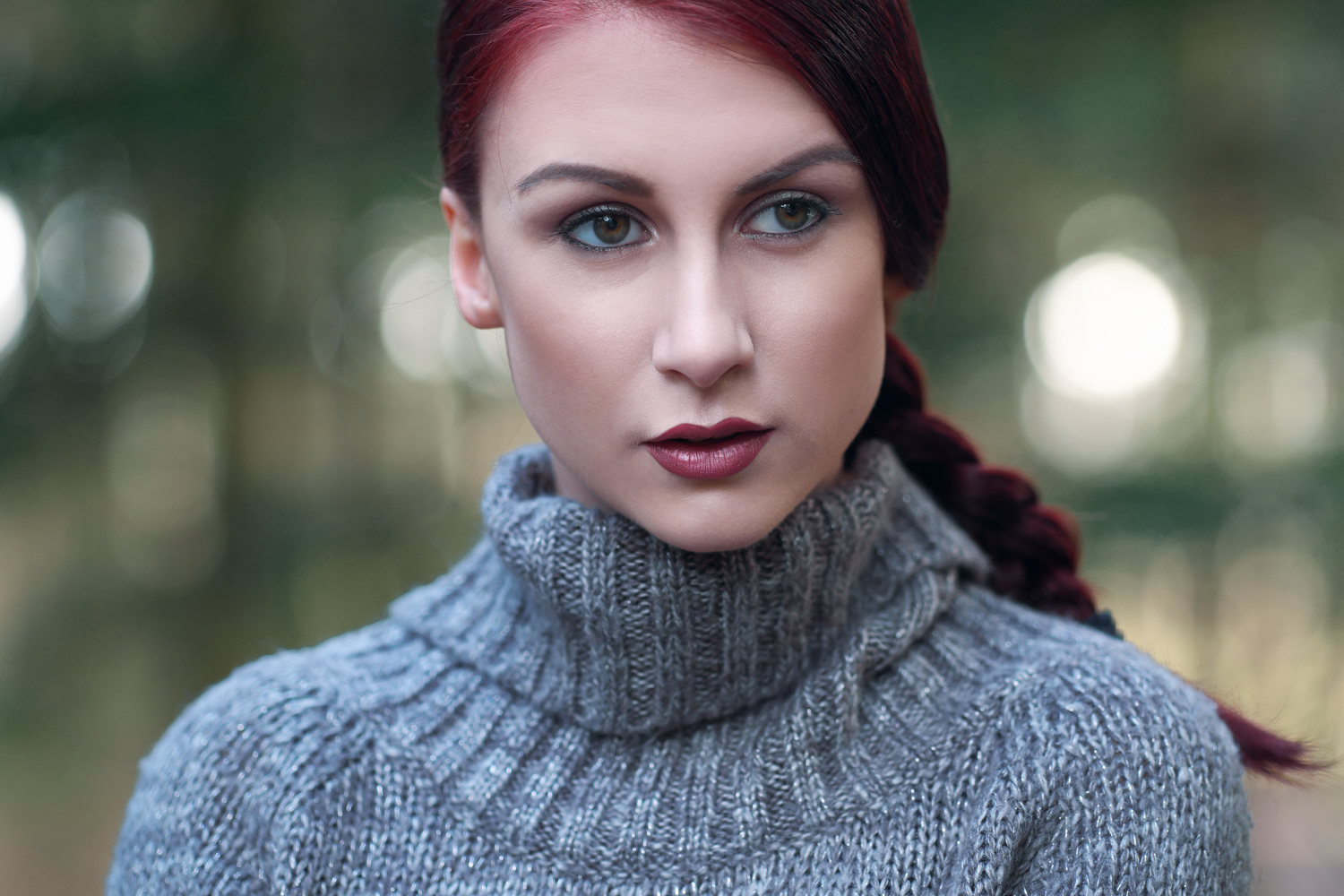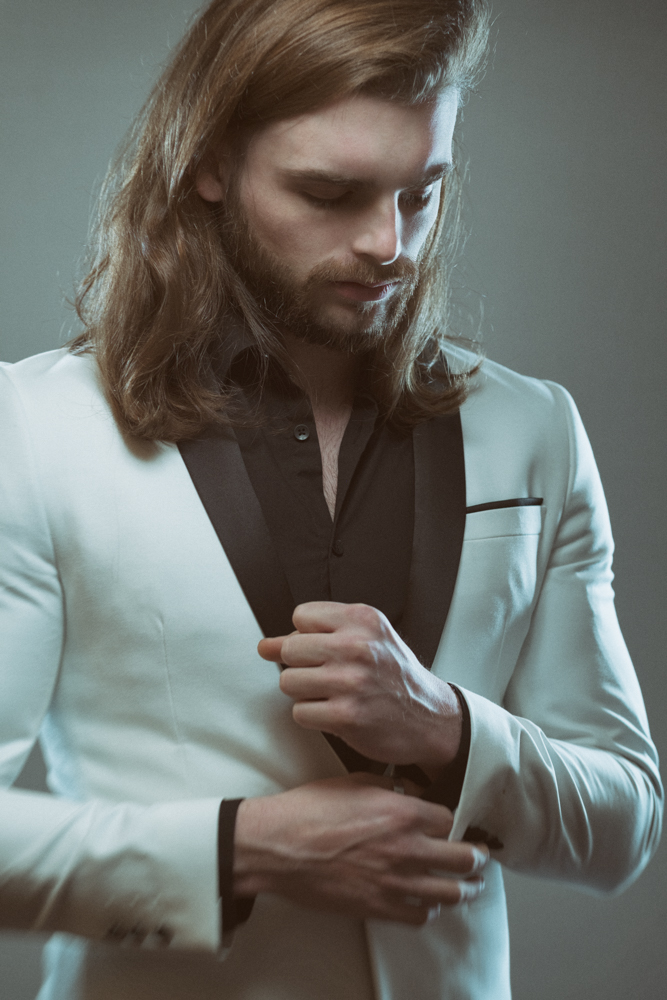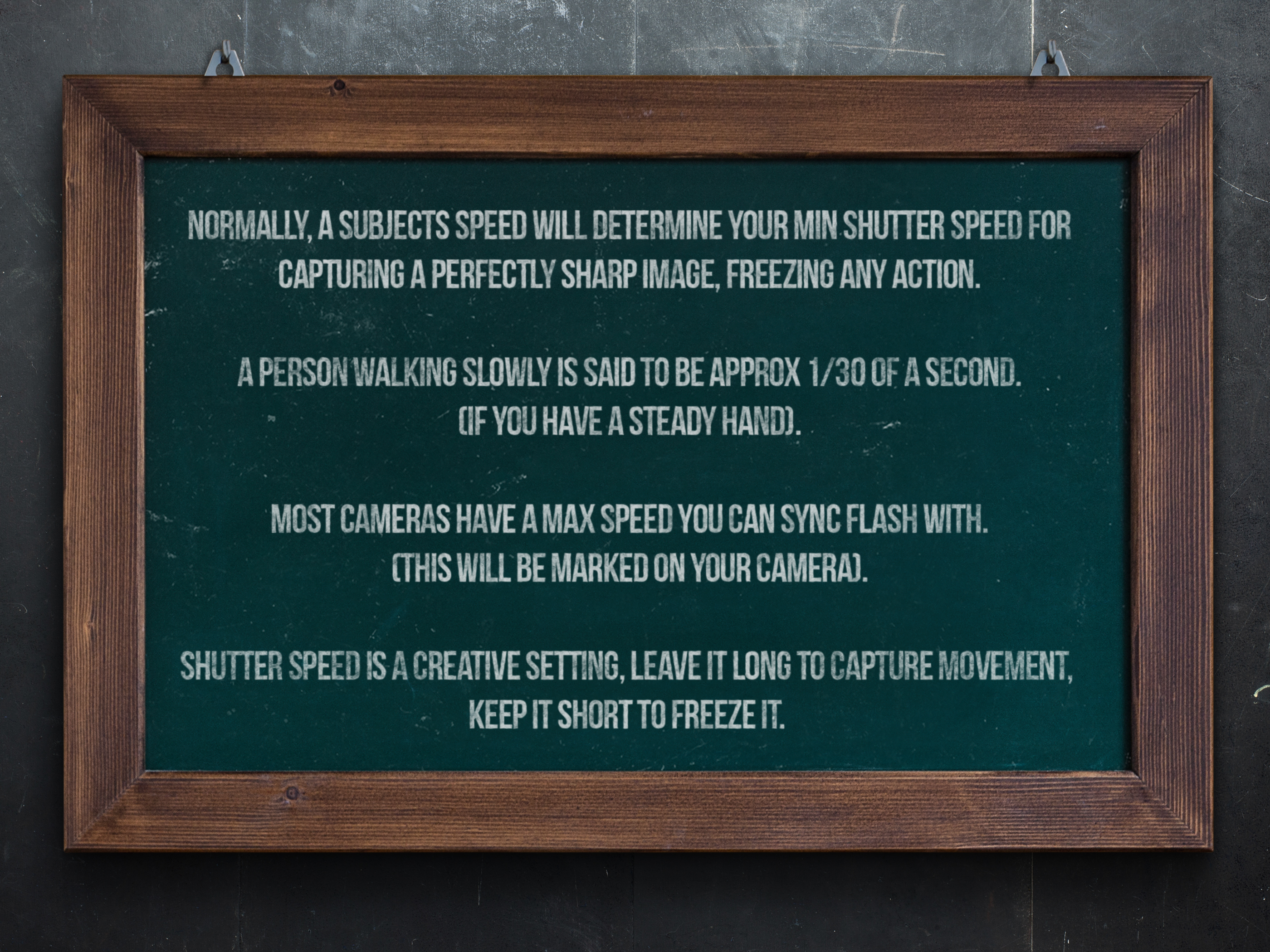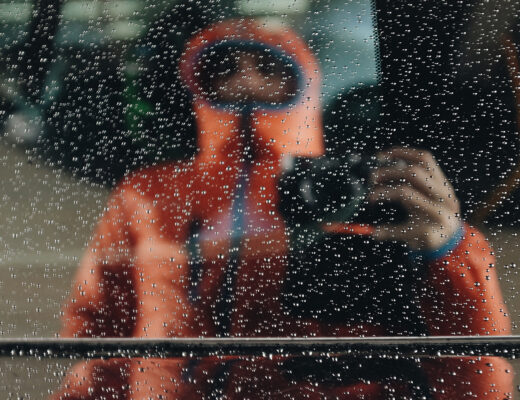If you are new to the manual mode of your Fujifilm camera, which should you learn first? Which is more important: mastering your shutter speed or understanding aperture?Let’s break it down and look at what they do, how they are linked and the best ways to explore them for how you want to shoot.
There are three main elements that control the image being saved when you take a photograph with your camera: ISO, Shutter Speed and Aperture.
There is a myth that ISO is linked to the exposure, which is untrue, but I can understand where it came from. It is linked to the exposure triangle as far the settings go, but not directly linked to the exposure equation. ISO just changes the brightness of the result of the shutter speed and aperture equation. The easy way to separate them is that shutter speed & aperture are creative settings that can change the outcome of the image by more than just making an image brighter or darker. The ISO changes the sensitivity of the sensor and does not change the light entering into the camera, which is what photography is all about.
To cover ISO very quickly, yes, it is part of the way we can control the amount of light in our finished image but is not controlling an artistic element, and is not part of the balancing of the shutter speed and aperture settings. To put this another way, if your balance of shutter speed and aperture is off, you can not correct this by adjusting your ISO.
Looking at my sketch-board, images A, B and C will be no different in terms of motion captured or depth of field. The only effect would be a brighter image recorded plus more grain in the final image.
A = Normal
B = Brighter
C = Brightest
So, What does Shutter Speed Control and why is it important?
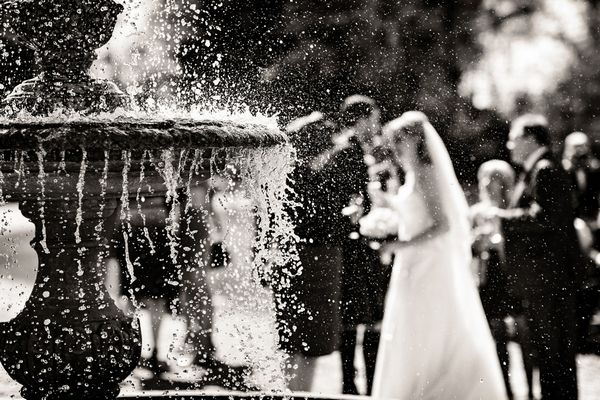
Image by Kevin Mullins
Shutter speed is all about movement. It is either about capturing movement or the lack of it. Sometimes we want to pin sharp images, and sometimes we want to capture hours of movement and blend it all into a single image. The important thing is we, as the photographer must understand what the shutter setting is going to do creatively to the story of the image we are producing. The image above of the water fountain has been captured with a fast setting. Freezing the usually quick movement of the water. The image below has been created with a softer approach and lots of movement has been introduced as the confetti has fallen through the image.
The image above is a perfect combination of low depth of field and slow shutter speeds – technical perfection, but how do we know what shutter speeds to aim for ?
Which image from the chart above would have the highest chance of capturing motion?
A = 1/30th
B = 1/250th
C = 1/500th
Remember the longer the shutter is open, the more chance we can capture movement in our images.
From genre to genre and photographer to photographer, the importance of being able to capture pin-sharp images will change. Most of my work at the moment seems to be in the advertising world. They, for obvious reasons, like to have products shown in a clean, crisp and sharp way. But there is always room for some creative input. Magnus Jewellery makes jewellery for both men and women themed around the sports and fitness world, so they liked the idea of movement introduced into this image as it conveys the jewelry is suitable to worn all the time.
A slight bit of motion can really make a dramatic difference in an image.
What is Aperture and how does it affect the image?
If shutter speed is about movement, aperture is about detail, usually know as the depth of field.
The depth of field or DOF is a pretty simple concept if you think of it in the sense of how much is in focus in your image. The deeper the focus, the wider the DOF.
The larger the F stop, the deeper the focus is going to be, as the diagram above shows. The f/16 setting has more of the trees in focus than the same lens set to f/2. The areas not in focus are given the term bokeh. The way the lens is made gives way to different shapes and tones of bokeh.
If we look at the image below, would we say the image had a shallow focus or a deep focus? Can you tell from the bokeh ?
As a rough guess from the chart below is the image above going to be closest to A, B or C ?
Depth of field in use
The image below (shot for Magnus Jewellery) was photographed in a busy gym. We used a super shallow depth of field to isolate the subject from the busy and distracting background.
In contrast to the image above, this image was shot at using a wide depth of field to show the Birmingham city Skyline. What would you guess the settings to be for these images? Comment below.
Flash & Shutter speeds:
Personally, shutter speed is quite important to me as I like to use flash. As some of us know, we have a maximum shutter speed when using flash. This is due to how the shutter works. Using daylight, depending on which Fujifilm camera you are using, we can switch to electronic shutter modes but the flash will only work with the Mechanical Shutter mode.
On my X-Pro2, the maximum shutter speed is 1/250 of a second, however, I use the Cactus system to enable me to shoot up to 1/8000 of a second using flash. Look up HSS in the search bar for more info. As Damien Lovegrove says in his post about location lighting, we think global shutters are the next big thing and will change how shutters react with flash sync speeds and shutter speed in general. HSS photography is quite fun and really lets you push the limits of what we can do; we can extend the ratio of shutter speed and aperture, for example, shooting wide open on bright sunny days to create images like the one below using low depth of field and fast shutter speeds.
A summary & which is more important?
We can use these settings to change not only how bright our image is but what the image looks like; mastering these settings will help you control the light coming into to your camera. The Fujifilm cameras are great cameras to learn and work with as they give us fantastic access to these vital settings at all times.
As to which is more important, there is simply no way to say which is more important until we know what the photograph we are making is about. For example, if we are using flash photography in a studio, depth of field is going to be the most important element as the shutter speed is more than likely controlled by the flash settings. In another example, we could be shooting landscapes, looking to capture the slow movement of the clouds or the waves on a beach.
Which is more important is for you to decide, but I would say that getting the shutter speed wrong can totally ruin a great image, whereas you can only get an image to be better using depth to isolate your key subjects. Shooting portraits with super narrow aperture lenses such as the 90mm, 80mm and 56mmF1.2 can sometimes lead to focusing trouble. Missing critical focus because you have focused on the nose and not the eyes are things we have all done from time to time. Using the focus peaking modes can help ensure you are locked on to the areas you want to be.
Play around seeing what the slowest shutter speeds you can hold the camera and which lenses you are most stable with. Use a tripod if you want to shoot shutter speeds lower than 1/30 sec and don’t forget, if your shutter speed is lower than your focal length, use a tripod at all times. For example. If you are at 200mm, you should be faster than 1/200 sec or be using some way to stabilise your camera (check out this article).
5 top tips for shooting low DOF portraits.
- Check your shots – shooting super low depth gives little room for error.
- Hold your breath and burst shoot 3 frames at a time. When shooting at f/1.2, just breathing can throw out the focus.
- Use a tripod if you can & keep your subject relaxed.
- Seat your subjects – they are going to move about less if they are sat down.
- Set the focus point to eye & use the smallest focus box (weight) you can. Try using manual too.

